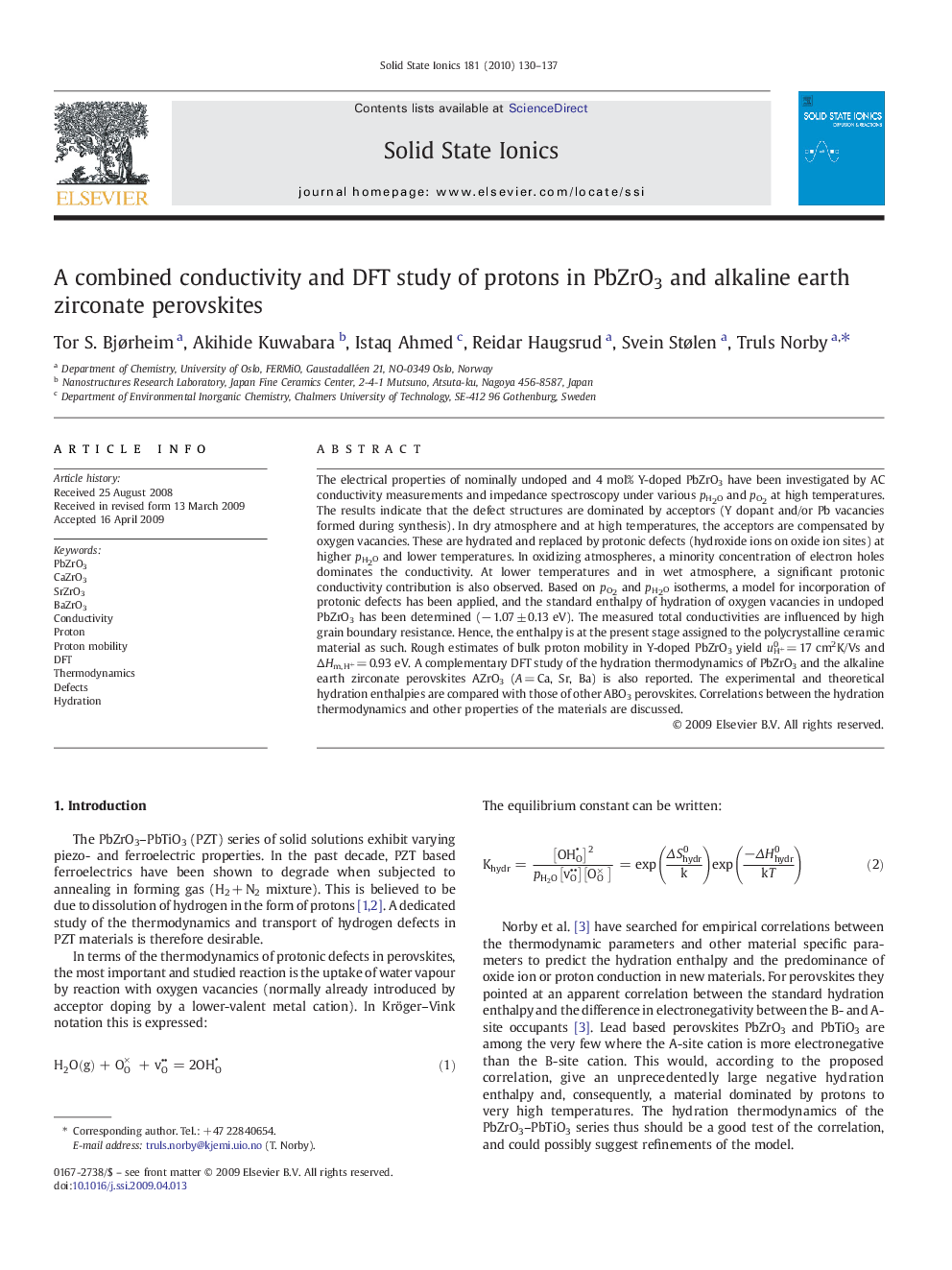| Article ID | Journal | Published Year | Pages | File Type |
|---|---|---|---|---|
| 1296735 | Solid State Ionics | 2010 | 8 Pages |
The electrical properties of nominally undoped and 4 mol% Y-doped PbZrO3 have been investigated by AC conductivity measurements and impedance spectroscopy under various pH2O and pO2 at high temperatures. The results indicate that the defect structures are dominated by acceptors (Y dopant and/or Pb vacancies formed during synthesis). In dry atmosphere and at high temperatures, the acceptors are compensated by oxygen vacancies. These are hydrated and replaced by protonic defects (hydroxide ions on oxide ion sites) at higher pH2O and lower temperatures. In oxidizing atmospheres, a minority concentration of electron holes dominates the conductivity. At lower temperatures and in wet atmosphere, a significant protonic conductivity contribution is also observed. Based on pO2 and pH2O isotherms, a model for incorporation of protonic defects has been applied, and the standard enthalpy of hydration of oxygen vacancies in undoped PbZrO3 has been determined (− 1.07 ± 0.13 eV). The measured total conductivities are influenced by high grain boundary resistance. Hence, the enthalpy is at the present stage assigned to the polycrystalline ceramic material as such. Rough estimates of bulk proton mobility in Y-doped PbZrO3 yield uH+0 = 17 cm2K/Vs and ΔHm,H+ = 0.93 eV. A complementary DFT study of the hydration thermodynamics of PbZrO3 and the alkaline earth zirconate perovskites AZrO3 (A = Ca, Sr, Ba) is also reported. The experimental and theoretical hydration enthalpies are compared with those of other ABO3 perovskites. Correlations between the hydration thermodynamics and other properties of the materials are discussed.
